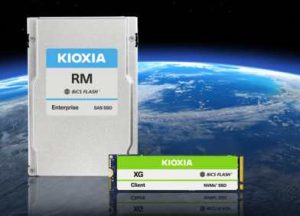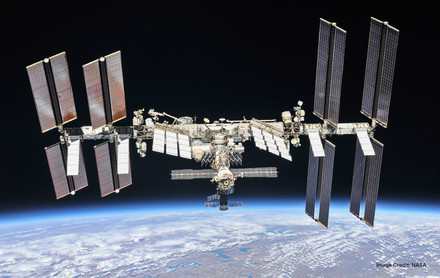Kioxia and HPE Team Up to Send SSDs into Space for Spaceborne Computer-2 Program in International Space Station
Features Kioxia RM Series Value SAS and XG Series NVMe SSDs in HPE Edgeline Converged Edge system and ProLiant server used for research experiments.
This is a Press Release edited by StorageNewsletter.com on March 7, 2023 at 2:00 pmKioxia America, Inc. announces its participation in the Hewlett Packard Enterprise (HPE) Spaceborne Computer-2 (SBC-2) program.
International Space Station
As part of the program, Kioxia SSDs provide flash storage in HPE Edgeline and ProLiant servers in a test environment to conduct scientific experiments aboard the International Space Station (ISS).
Spaceborne Computer-2
(Photo: NASA)
The Spaceborne Computer-2, the first in-space commercial edge computing and AI-enabled system to run on the ISS, is part of a greater mission to advance computing and reduce dependency on communications as space exploration continues to expand. For example, astronauts can achieve increased autonomy by processing data directly on the ISS, eliminating the need to send raw data to Earth to be processed, analyzed and sent back to space.
RM Series Value SAS and XG Series NVMe SSDs

Designed to perform various high-performance computing tasks in space, including real-time image processing, deep learning, and scientific simulations, the SBC-2 utilizes a combination of HPE’s edge computing solutions, including the Edgeline Converged Edge System, a compact system, and the ProLiant server for high-performing capabilities. The SBC-2 targets a range of workloads and has already helped advance progress in healthcare, image processing, natural DR, 3D printing, 5G, AI, and more. As a sponsor of the SBC-2, Kioxia has provided flash-based SSDs, including RM Series Value SAS and XG Series NVMe SSDs, to enable these solutions. These flash-based SSDs are better-suited than traditional HDDs to withstand the power, performance and reliability requirements of outer space, as they have no moving parts, are less susceptible to electromagnetic waves and provide faster performance.
“Proving that data center-level compute processing can successfully operate in the harsh conditions of space will truly take something special,” noted Scott Nelson, EVP and CMO, Kioxia America. “The synergies that exist when Kioxia and HPE collaborate to leverage our respective technologies, allows us to explore and study at the very edge of scientific discovery. We can’t wait to see where the HPE Spaceborne Computer journey takes us.”
Kioxia has been collaborating with HPE to create storage solutions for years, and the company’s products enable a range of HPE solutions, from mobile to data center to enterprise. Value SAS SSDs are part of the Kioxia Life After SATA campaign, enabling customers to transition away from aging SATA SSDs, while delivering higher performance and reliability.
“It is an exciting time for HPE as we continue to play an important role in the expanding space economy. We are pleased to continue our longstanding collaboration with Kioxia and partner together on our space computing initiatives to bring its storage solutions to the International Space Station with us,” said Jim Jackson, CMO, HPE. “By bringing Kioxia’s expertise and its SSDs, one of the industry’s leading NAND flash capabilities, with HPE Spaceborne Computer-2, together we are pushing the boundaries of scientific discovery and innovation at the most extreme edge.”
















 Subscribe to our free daily newsletter
Subscribe to our free daily newsletter


